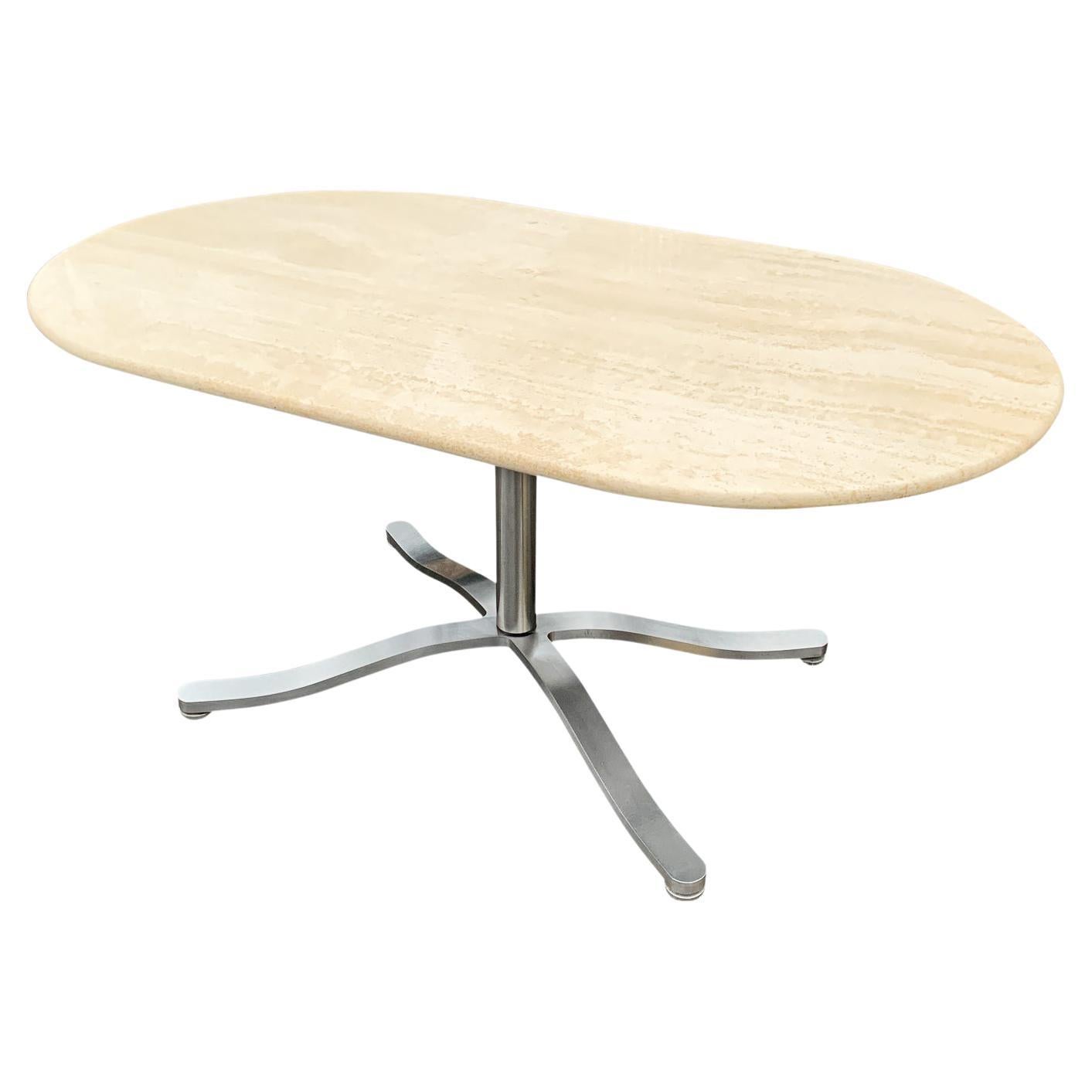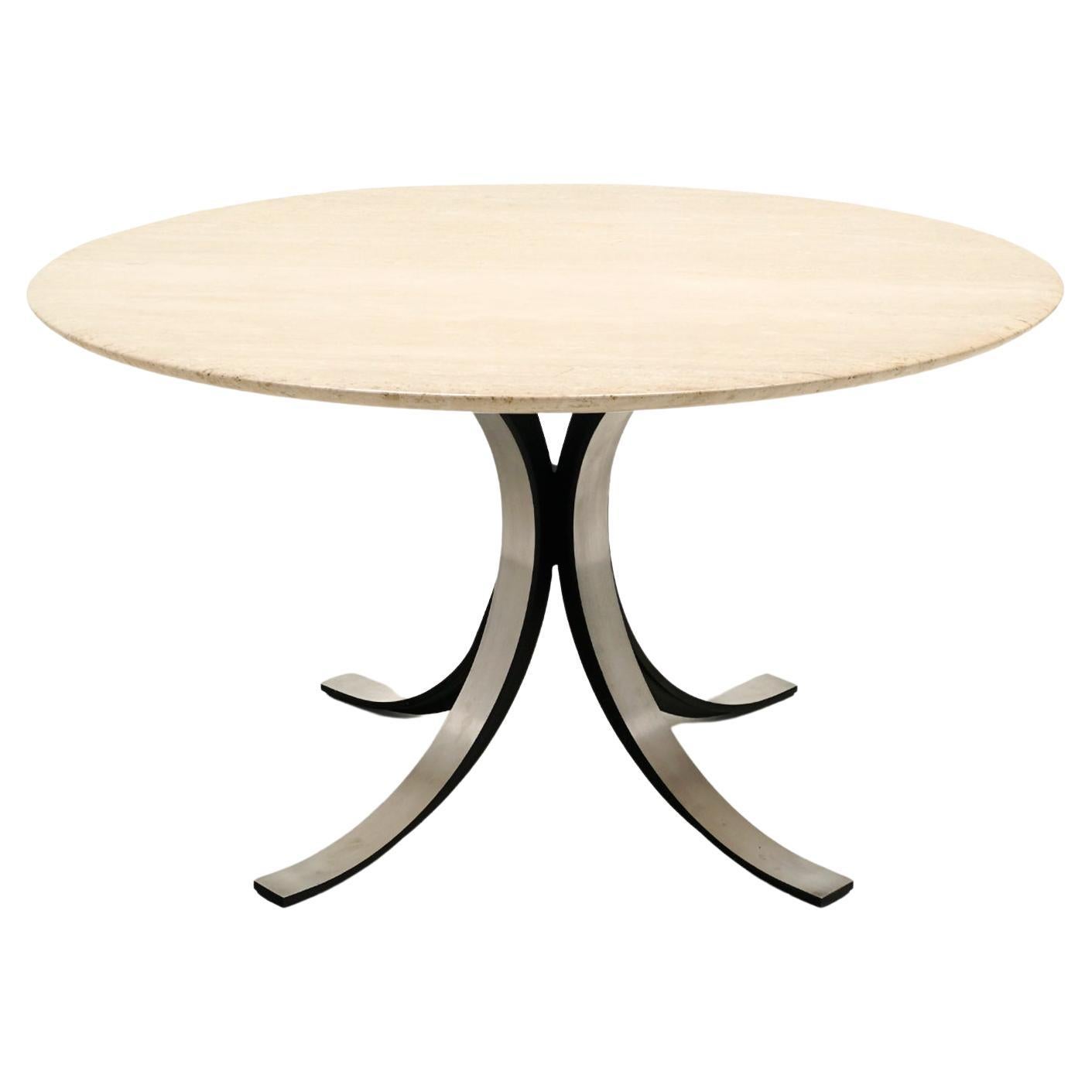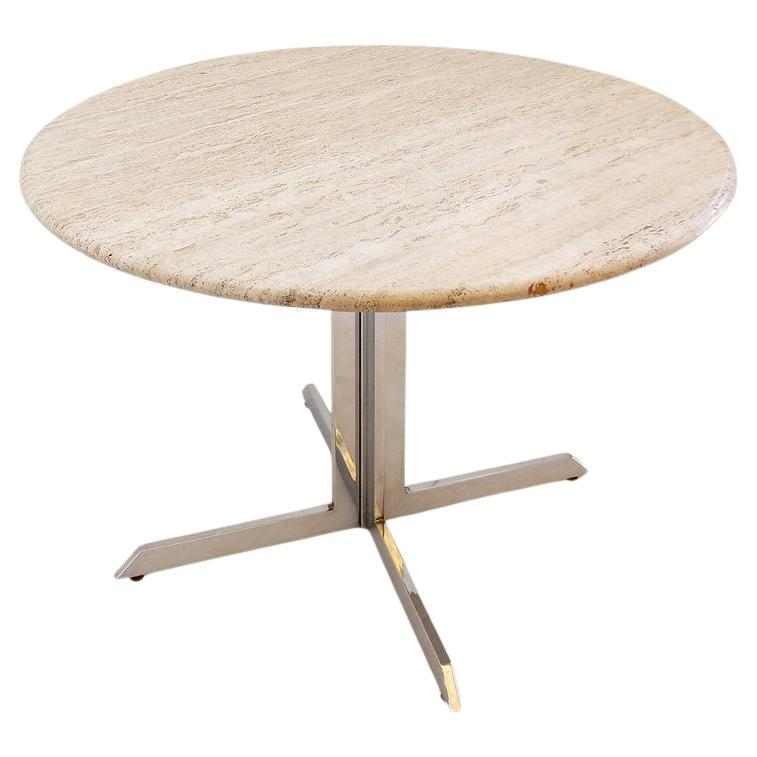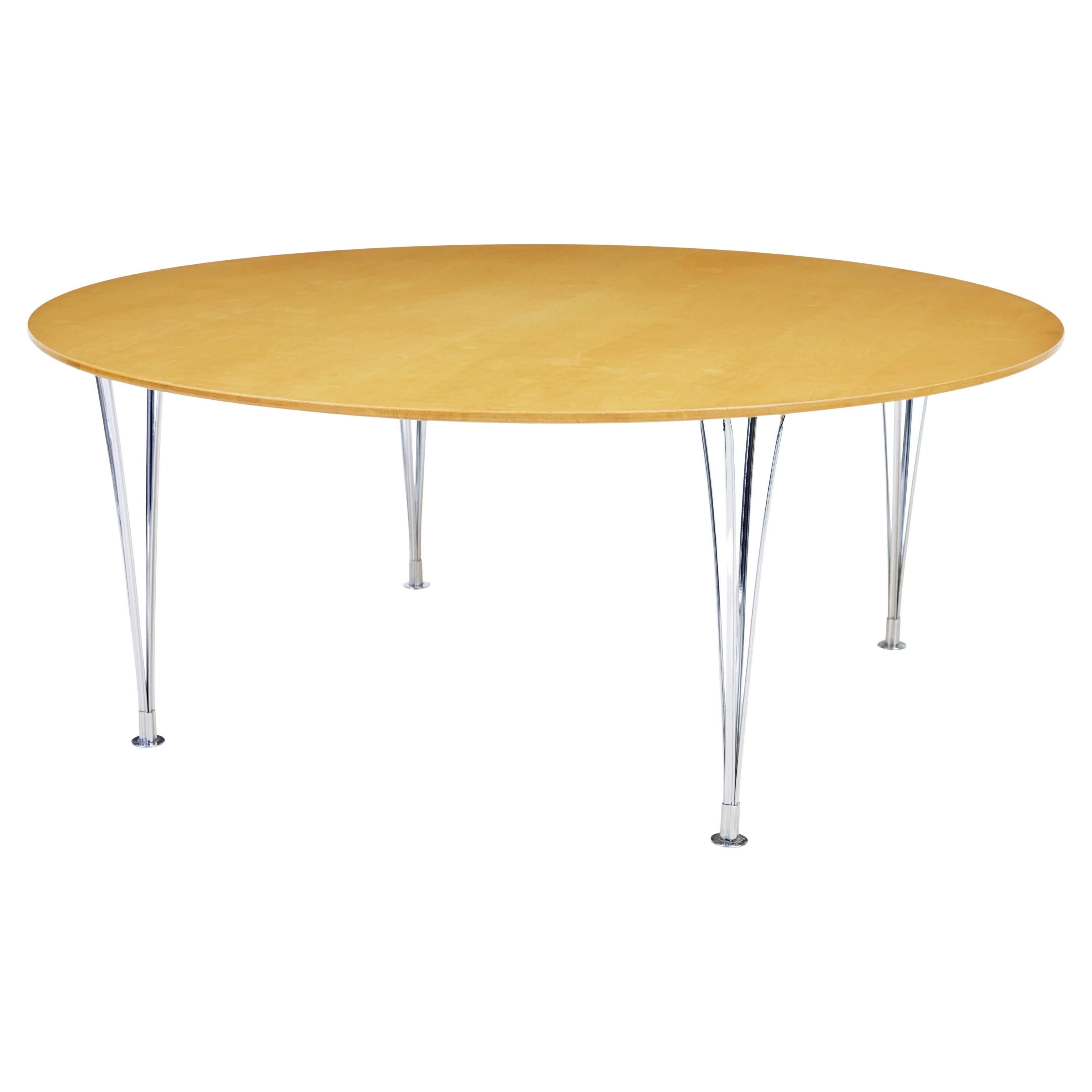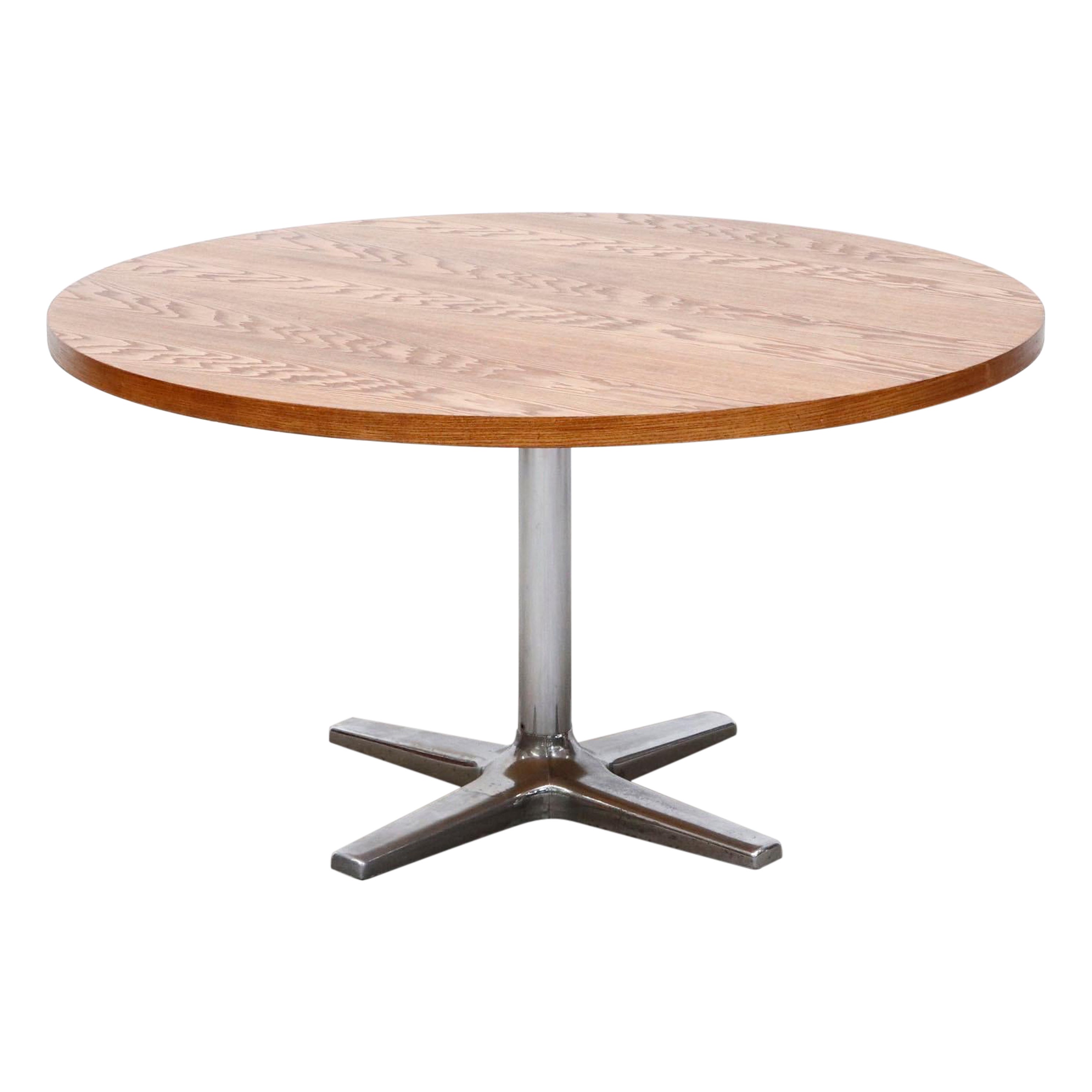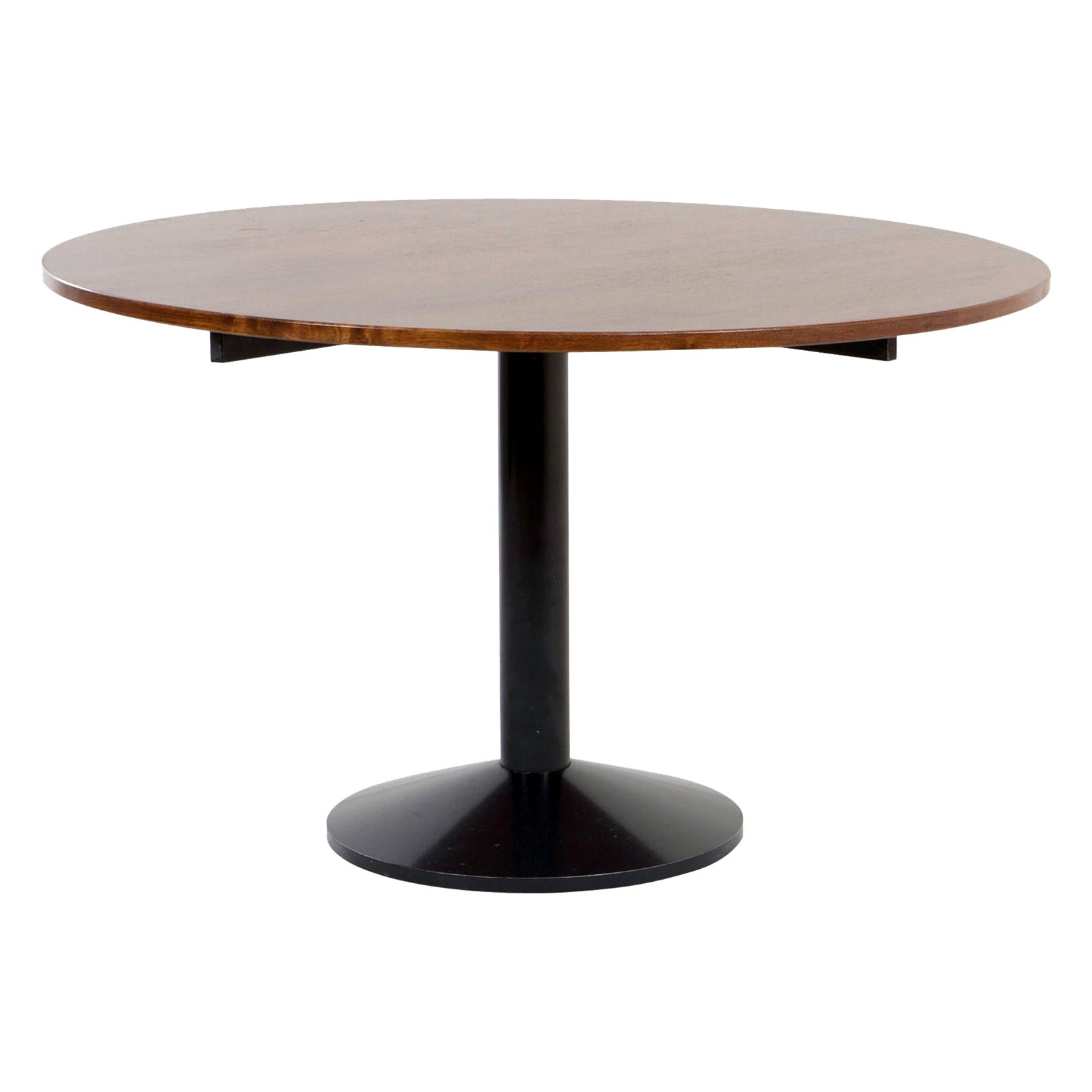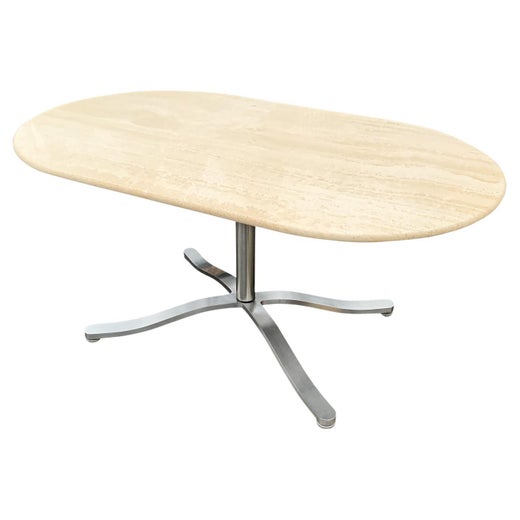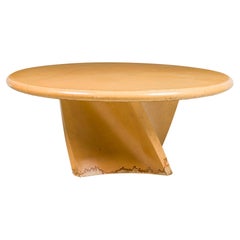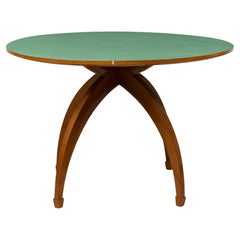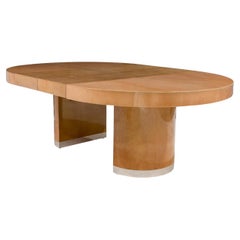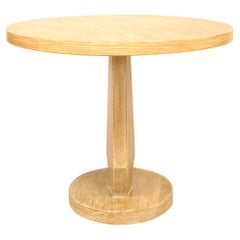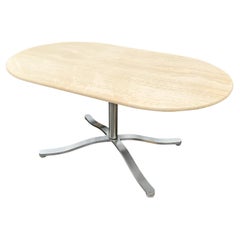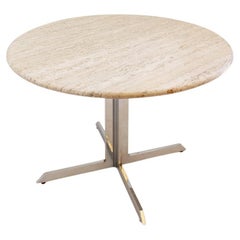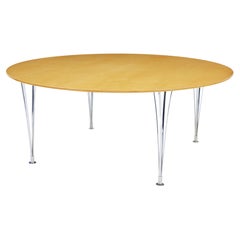Nicos Zographos Circular Travertine and Steel Dining Table
About the Item
- Creator:Nicos Zographos (Designer)
- Dimensions:Height: 28 in (71.12 cm)Diameter: 53.75 in (136.53 cm)
- Style:Mid-Century Modern (Of the Period)
- Materials and Techniques:
- Place of Origin:
- Period:
- Date of Manufacture:Mid-20th Century
- Condition:Wear consistent with age and use.
- Seller Location:Queens, NY
- Reference Number:Seller: DUF06431stDibs: LU977931834592
Nicos Zographos
Industrial designer Nicos Zographos is renowned as a mid-century modern master. His abstract structures and minimalist forms helped elevate 20th-century furniture design.
Born in Athens, Greece, in 1931, Zographos completed his graduate degree at the University of Iowa before joining the architectural firm Skidmore, Owings & Merrill (SOM) in 1957.
He worked in SOM’s interior design department, where he enjoyed unlimited creative freedom, resulting in the design of two critically acclaimed pieces. The fluid Ribbon chair, which he created in 1959, is an interpretation of the Barcelona chair by Ludwig Mies van der Rohe. The Alpha bucket chair, featuring Zographos’s signature reverse curl, was designed in 1960. Also while at SOM, Zographos developed a suite of TA35 low tables, which have gentle curves and slim stainless steel legs.
Zographos spent five years at SOM before he formed his own company, Zographos Designs Limited, in 1964. The New York-based firm manufactured elegant, polished and streamlined pieces such as lounge chairs, office chairs, side tables, coffee tables and dining room tables. Several of his furnishings have been included in interiors by such revered architects as Gordon Bunshaft and I.M. Pei.
Among Zographos’s most iconic designs are the wood-carved Ireland chair, the wooden Saronis tables and his two tubular-steel cantilevered chairs: the solid CH17 chair and the CH66 chair, which he designed in 1966. It is included in the permanent collections of the Museum of Modern Art in New York.
Zographos has retired to his native Greece, and Zographos Designs Limited recently closed after 56 years in business. His pieces continue to be highly sought by interior designers and avid vintage furniture collectors.
On 1stDibs, find a range of vintage Nicos Zographos seating and tables.
- ShippingRetrieving quote...Shipping from: Long Island City, NY
- Return Policy
More From This Seller
View All20th Century American Mid-Century Modern Dining Room Tables
Animal Skin
Mid-20th Century Italian Mid-Century Modern Dining Room Tables
Wood
Mid-20th Century Italian Mid-Century Modern Center Tables
Goatskin
Mid-20th Century Mid-Century Modern Center Tables
Wood
Vintage 1950s American Mid-Century Modern End Tables
Limestone
Mid-20th Century American Mid-Century Modern Dining Room Tables
Wood
You May Also Like
Vintage 1970s American Mid-Century Modern Dining Room Tables
Travertine, Stainless Steel
Vintage 1960s Italian Mid-Century Modern Dining Room Tables
Travertine, Aluminum, Steel
20th Century Dining Room Tables
Travertine
Late 20th Century Swedish Mid-Century Modern Dining Room Tables
Steel
Vintage 1970s Dutch Mid-Century Modern Dining Room Tables
Metal, Chrome
Vintage 1950s Italian Mid-Century Modern Tables
Metal
